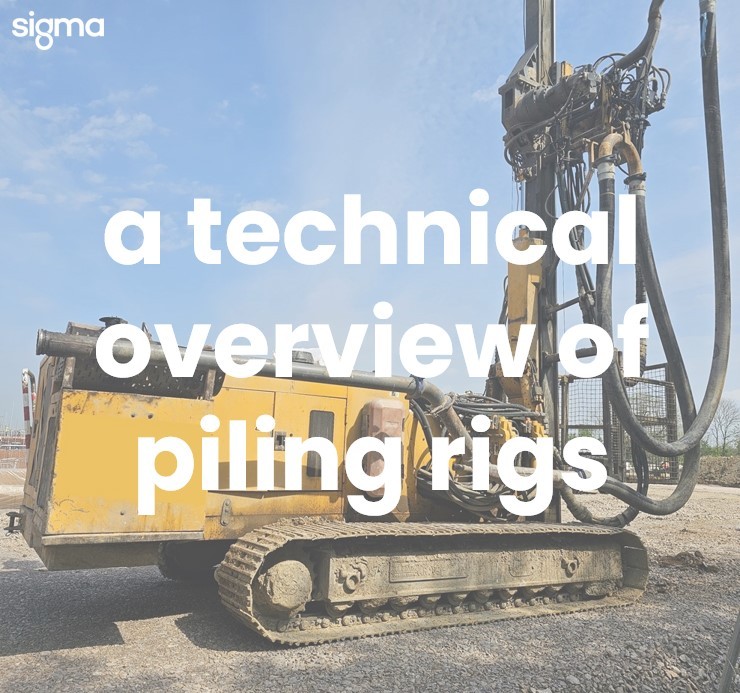
Introduction
In the construction industry, particularly in projects involving the creation of strong foundations for buildings, bridges, or other structures, the importance of piling rigs cannot be overstated. These robust machines serve as the backbone of many construction endeavors, driving deep into the earth to provide stability and support. In this technical overview, we delve into the workings of piling rigs, exploring their components, functionality, and the crucial role they play in modern construction.
Understanding Piling Rigs
Piling rigs are specialized machines designed for the installation of piles, which are long structural elements driven into the ground to provide support for buildings and other structures. Piles can be made of various materials, including concrete, steel, or timber, depending on the specific requirements of the project.
Key Components:
- Mast: The mast is the vertical structure of the piling rig that supports the hammer or drill assembly. It provides stability and allows for precise positioning during pile installation.
- Hammer or Drill Assembly: This component is responsible for driving the piles into the ground. Depending on the type of piling rig, it may utilize hydraulic hammers, vibratory hammers, or rotary drills to achieve this.
- Power Source: Piling rigs are powered by diesel engines or, in some cases, electric motors. These power sources drive the hydraulic systems responsible for operating the rig's various functions.
- Tracks or Wheels: Piling rigs are often mounted on tracks or equipped with wheels, allowing them to move across rough terrain and access construction sites with ease.
- Control Cabin: The control cabin houses the operator and the controls necessary for operating the piling rig. It provides a comfortable and safe environment for monitoring the rig's performance and adjusting its parameters as needed.
Functionality
Piling rigs are versatile machines capable of performing various types of pile installation techniques, including:
- Impact Piling: This method involves driving piles into the ground using a hammering action. Hydraulic hammers are commonly used for this purpose, delivering powerful blows to force the pile into the earth.
- Vibratory Piling: Vibratory hammers use oscillating motion to drive piles into the ground. This technique is particularly effective in dense or cohesive soil conditions where traditional impact methods may be less efficient.
- Rotary Drilling: In situations where soil conditions are challenging or piles need to be installed to significant depths, rotary drilling may be employed. This technique involves rotating a drill bit to excavate soil and create a hole for the pile to be inserted.
Applications
Piling rigs are essential in a wide range of construction projects, including:
- High-rise Buildings: Piling rigs are used to create deep foundations capable of supporting the weight of tall structures.
- Bridges and Viaducts: Piling rigs play a crucial role in the construction of bridge foundations, providing stability and support for bridge piers and abutments.
- Offshore Structures: In offshore construction projects, such as oil platforms or wind farms, piling rigs are utilized to install piles in seabeds to support the structures above.
Conclusion
Piling rigs are indispensable assets in the construction industry, providing the necessary foundation for the built environment. With their robust design, versatility, and capability to tackle a variety of soil conditions, these machines continue to be instrumental in shaping the landscapes of modern cities and infrastructure. As construction technology advances, piling rigs will undoubtedly remain at the forefront of innovation, ensuring the stability and longevity of structures for generations to come.
Contact us with any enquiries!
T: +44 (0) 1642 206100
E: sales@sigmaplantfinder.com
Disclaimer: This blog post contains content generated by an artificial intelligence (AI) model. While we have made efforts to ensure the accuracy and quality of the information provided, it is important to note that AI-generated content may not always be error-free or fully aligned with current standards, regulations, or the latest research. We recommend using this information as a starting point for your research and analysis, but we strongly encourage you to verify the facts, consult experts, and cross-reference the content with trusted sources before making any decisions or drawing conclusions based on the information presented in this blog post. The views and opinions expressed in this content are not necessarily those of the blog's author or publisher, and we cannot be held responsible for any consequences that may arise from its use.
